Other
Archive for the ‘Other News Articles’ Category
A One-of-a-kind Entertainment Destination
Wednesday, April 13th, 2011New BC Place roof will ‘be fine’ in high wind, says PavCo chair
Wednesday, March 2nd, 2011Mike Howell
Van. Courier

B.C. Place’s new retractable fabric roof cost $240 million. Photograph by: Dan Toulgoet, Courier
VANCOUVER – The old roof on BC Place Stadium was no match for powerful winds three years ago when the air-supported dome ripped open and forced workers to deflate it for repairs.
High winds were on David Podmore’s mind Wednesday when he led media, politicians and high school students on a tour of the stadium, which is getting a new $240 million retractable fabric roof.
The obvious question: Will the new roof be able to withstand a powerful windstorm such as the one today that cancelled ferry sailings, knocked out power to Lower Mainland residents and shut down Grouse Mountain?
“It’ll be fine,” said Podmore, the chairperson for BC Pavilion Corp., the provincial Crown corporation that owns the stadium. “The building is designed for Vancouver weather conditions and it’s designed for the more extreme conditions.”
The winds forced workers at the stadium to shut down the operation of cranes in the inner bowl, preventing any heavy lifts. Podmore said safety legislation prevents such work when winds gust beyond 24 kilometres per hour.
The stadium will be home to the B.C. Lions and Vancouver Whitecaps. A decision will be made prior to a game whether the roof will be opened or closed. Podmore said it was unlikely the roof will be opened or closed during a game if there was a change in the weather.
“If you think about a convertible car, it wouldn’t be very bright to drive down the highway at a 100 kilometres an hour and open the convertible roof on your car,” he said, referring to a windstorm. “It’s not a sensible thing to be doing.”
Though Vancouver doesn’t get a lot of snow, the new roof is designed to withstand heavy snowloads. Podmore said the roof cannot be left open year-round and allow snow to fall on the field because the stadium regularly hosts trade shows, concerts and other events.
The stadium was used an average of 210 days a year before construction began and the expectation is to add 40 more days of events. Renovations, including cost of the roof, total $563 million.
The new cable-supported retractable roof will be the largest of its kind in the world. But it will not fully retract to the outer rim of the stadium, meaning spectators will always be covered from rain and snow.
The roof will retract enough so the playing surface will be exposed to the elements and, on a sunny day, reveal more than 7,500 square metres of blue sky. The roof will take approximately 20 minutes to open or close.
From inside the stadium, Podmore pointed out where louvers will be installed at the upper edges of the building to allow for ventilation and natural light. All of the 36 masts, which arrived at the stadium in three pieces, are now in place high above the stadium.
A cable network resembling a series of suspension bridges runs from the 240-tonne masts to a centre node on top of a temporary seven-storey steel structure at midfield. This is where crews fasten the cables and where a large scoreboard will hang.
The field, which was a muddy mess, will be covered in FIFA-approved artificial turf. Podmore said turf was chosen instead of grass because grass is difficult to maintain, particularly when it has to be covered to accommodate trade shows and concerts.
The B.C. Lions will open the stadium Sept. 30.
© Copyright (c) Vancouver Courier
Paragon Gaming’s casino proposal
Thursday, February 17th, 201112th & Cambie: PavCo likes Paragon
Mike Howell
Van. Courier
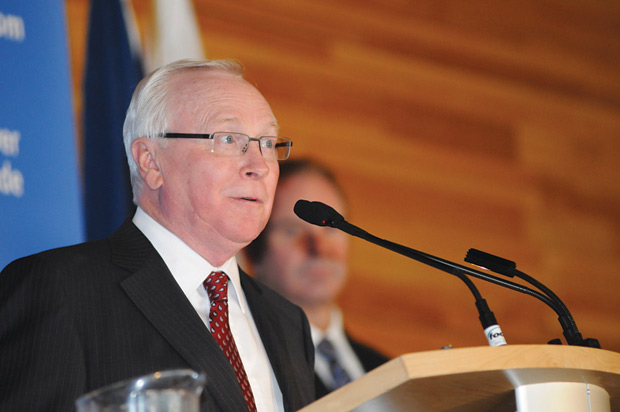
David Podmore, B.C. Pavilion Corporation chairperson, told a Vancouver Board of Trade luncheon crowd he hopes city council will vote in favour of Paragon Gaming’s casino proposal. Photograph by: Rebecca Blissett, Vancouver Courier
Hey, city council–David Podmore really wants you to approve a mega casino proposed for the lands west of B.C. Place Stadium. This is hardly a surprising request. Podmore is the chairperson of the B.C. Pavilion Corporation, which is the provincial Crown body that operates the stadium and signed a 70-year lease in February 2010 with Paragon Gaming Inc. to build a 1,500-slot casino adjacent to the stadium. This is the same stadium undergoing a $563 million renovation, $240 million of which is to build the retractable roof. PavCo needs to find ways of paying down the debt. Enter Paragon, which has agreed to pay PavCo $6 million a year in lease payments, with the amount to increase after 10 years. “We are hoping, of course, that council will elect to support this project,” said Podmore during a Vancouver Board of Trade luncheon Feb. 10 at the Vancouver Convention Centre. “It is very, very important certainly to the business case for B.C. Place and generates a good portion of the capital that will be used to retire the debt that was taken on to rebuild B.C. Place.” Paragon’s proposal, which includes two hotels, goes before city council Feb. 17 at a public hearing. With more than 50 people already on a list to speak, council is not expected to make a decision on the casino until the hearing resumes, possibly March 1. Paragon, which owns Edgewater Casino at the Plaza of Nations, wants to relocate next to B.C. Place and double its games tables from 75 to 150 and triple its slots from 520 to 1,500. It would be the biggest casino in Western Canada. As your faithful scribe has reported, there is plenty of opposition to the proposal. Even renowned architect Bing Thom has entered the fray, calling for a referendum on gaming expansion. Podmore has obviously been listening to what the critics are saying. “Just keep in mind as you hear over the next few days, it’s always easier to be the critic,” he told a room full of business types, which included members of the B.C. Lottery Corporation, developers and lawyers. “And you don’t have to be as sharp to be blunt. You don’t have to be as sharp in terms of the accuracy of your statements. But when you’re the proponent, you have to be accurate, you have to be truthful and you have to put a lot of hard work into presenting your proposal.” Podmore recalled that B.C. Place, Expo 86, the Olympics, rapid transit and the convention centre all had their critics when they were proposed. And guess what? “There’re very few people, if any, in the community that wouldn’t say that [the projects] made a major, major contribution to the positive development of Vancouver and the province of British Columbia.” Now it’s up to city council to decide whether a casino will make the same contribution to the city and province–the same city council, by the way, which is ruled by Mayor Gregor Robertson and his seven Vision Vancouver councillors. And Vision, by the way, is the same party that received sums totalling $13,000 from Concert Properties between February 2009 and June 2010, according to the party’s disclosure statements filed at city hall. Why is this relevant? Maybe it isn’t. Ask Podmore, he’s the chairman and chief executive officer of Concert Properties. © Copyright (c) Vancouver Courier
The Mexico Quandary: Safety or Savings?
Thursday, December 23rd, 2010MICHELLE HIGGINS
Other
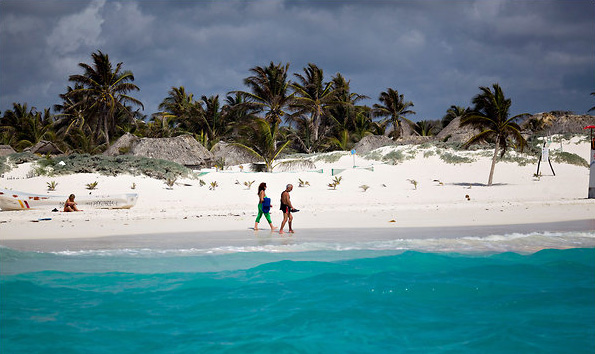
Tourists walk along the beach in front of Zazilkin, a hotel with rustic cabanas in Tulum, on the Yucatán Peninsula. Michael Nagle for The New York Times
WHEN Alex Trettin and his wife, Jenn, suggested to family and friends that they take a group vacation to Mexico, the reaction was mixed. About half of the group of 29 immediately signed on for the November trip to the Riviera Maya, south of Cancún, where they would visit Maya ruins, fish and lounge by the pool at an upscale resort for the bargain price of $150 a person a night. The other half hesitated, citing concern about Mexico’s continuing drug war.
“My aunt stated she hoped we didn’t have any issues with the drug cartels,” said Mr. Trettin, a Mexico-travel specialist in Tacoma, Wash., who assured everyone that the beach resort they were going to near Playa del Carmen was far from the violent clashes they had seen on television. Ultimately, they all went, but the concerns that some in the group expressed are indicative of the quandary many travelers face when they consider the safety risks versus the convenience and affordability of a vacation in Mexico.
While most of the drug-related violence has been in the northern border region of Mexico, far from the Maya temples of the Yucatán, the regional cuisine of Oaxaca or the beaches of Baja California Sur, violence has erupted in tourist destinations like Acapulco and the state of Michoacán, home to the famous monarch butterfly sanctuaries. Even Cancún’s safety was questioned earlier this year after eight employees of a strip club there were killed when a group of men threw Molotov cocktails into the building in an area not frequented by tourists.
To combat the perception that violence has been widespread, tourism officials in Mexico have invested $30 million in advertising and social media initiatives to spread the word that much of the country is safe for tourists. “Visitors have the right to be well informed,” said Alfonso Sumano, the regional director for the Mexico Tourism Board for the Americas. Many of the affected areas, he said, “are very far from the destinations tourists visit.”
The latest travel warning, issued by the State Department in September, urged American citizens to defer unnecessary travel specifically to Michoacán and areas along the northern border, including Tamaulipas, and parts of Chihuahua, Durango and Coahuila, where tourists generally don’t go. Yet, ever cautious, it stated, “violence has occurred throughout the country, including in areas frequented by American tourists.” Visitors were encouraged to stay on main roads in daylight hours and to remain in well-known tourist areas.
All of this has made travel to Mexico a hard sell lately, but travel agents say the negative publicity has also made Mexico among the best values out there as resorts lower rates or add free incentives to entice travelers. When asked where agents are recommending travelers go to get the most for their dollar this year, 70 percent said Mexico, according to Travel Leaders, a major network of agents.
“A lot of clients will come here and say, ‘I’ll go anywhere except Mexico,’ ” said Kate Rosevear, owner of a Travel Leaders agency in Plymouth, Mich. “Quite often we’ll be able to talk them back around to it based on the value.”
Some of the deals agents and tourism officials point out include Casa Ticul, a boutique hotel in Playa del Carmen, which is offering 20 percent off rates of $171 a night to travelers who book a January stay by the end of December. Villa del Palmar Cancún, a new all-inclusive resort in Playa Mujeres with a Greg Norman-designed golf course, has rates from $186 a person a night during the holidays and a rate of $142 a person a night after that — up to 60 percent off. And St. Regis Punta Mita is offering butler service, a third night free, a $50 resort credit per room and a glass of Champagne with its Welcome to Paradise deal from $580 a night for stays starting Jan. 11.
Mexican Destinations, the Mexico Villa brand of the rental company VacationRoost, has trained its agents to educate clients who call with safety concerns about how far its villas are from reported violence, and is offering specials of 25 to 50 percent off. One deal is Casa del Sol, a four-bedroom, five-bath property on the Pacific Coast in Ixtapa-Zihuatanejo, where rates have been slashed to $750 a night, from $1,500, in early January.
The pricing strategy seems to be working. The number of international tourists arriving in Mexico by air from January to October was 8.2 million, according to the latest data from the Mexico Tourist Board. That is an increase of 17.8 percent compared with the same period last year, when Mexico endured a down economy, H1N1 scares and drug violence. Visitors are up 6.4 percent over the same period in 2008, which was considered to be one of the best years for travel to Mexico. The number of American travelers increased by 13.4 percent, compared with the same time period in 2009.
Many resorts say safety is at the top of their guests’ minds. “When our reservations manager receives requests, the first question that is asked is if there has been violence in this area,” said Giorgio Brignone, the proprietor of Costa Careyes, a luxury resort two hours south of Puerto Vallarta, which has added free airport transfers to and from Manzanillo. To put jittery travelers at ease, the company has placed ads in magazines promoting “a different Mexico.” In addition, the company’s Web site highlighted the 24-hour security at the resort.
Part of the problem is that many travelers are unclear about where the violence has occurred and how it might affect their vacation, Mr. Brignone said. “People don’t realize that there are many regions and areas in the country that are not affected by the violence and drug wars,” he said. “It’s like saying I will not go to Dallas, or New York, because there are problems or riots in Los Angeles.”
Still, there are some tourist destinations travelers should steer clear of, at least for now. “I would not encourage my family to visit Acapulco right now,” said Josh Miller, who lives in Mexico City and is the general director for Mexico, Central America and the Caribbean for Control Risks, a risk management firm. “While a wonderful place to visit,” he said, “violent confrontations have been spilling over from the military effort against the cartels.” Travelers should also hold off on visits to Michoacán, in central Mexico. The state is a stronghold of La Familia, a drug cartel known for bold ambushes.
Popular resort areas, including Mazatlán, Puerto Vallarta, Ixtapa and Cancún’s resort strip are generally safe for travelers, Mr. Miller said, particularly if visitors stay within the resort’s boundaries. “Mexico is a volatile place,” he said. “You have to have your itinerary planned out quite well, consider transportation and stay abreast of latest developments.”
Some travelers who have been to Mexico before are surprised when friends express safety concerns. “Everybody was like, ‘What? You are going to Mexico?’ ” said Tina Youtsey, a dog groomer from Milan, Mich., who went to the Riviera Maya with her teenage daughter last month. “Seriously,” she said, “the drug lords aren’t hanging out at the resort.” Having visited Mexico two times before, she added, “I wasn’t really worried.”
© Copyright (c) New York Times
Tips For Enjoying Los Cabos
Monday, December 20th, 2010Other
Home stagers reach out to troubled women
Friday, December 17th, 2010Cheryl Rossi
Van. Courier
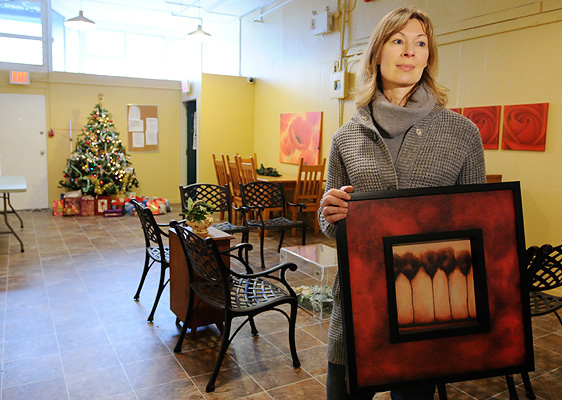
Kulli Yee was one of a dozen designers who redecorated two rooms at Sereena’s Housing for Women in the Downtown Eastside. Photograph by: Dan Toulgoet, Vancouver Courier
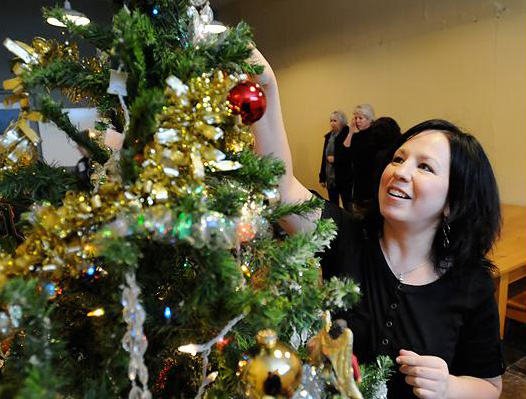
Kulli Yee was one of a dozen designers who redecorated two rooms at Sereena’s Housing for Women in the Downtown Eastside. Photograph by: Dan Toulgoet, Vancouver Courier
Heather Kleim was fretting about what to wear to a meeting with a real estate agent when she had a reality check.
Kleim, a 33-year-old owner of a home staging business, saw a news story about Louise Edwards, a Kamloops woman who has helped women and children in need in the Downtown Eastside for more than 30 years.
“She knows what it’s like to live life having absolutely everything that you need and she just saw a really great need down here,” Kleim said.
Kleim, the owner of Epic Empire Designs, contacted the reporter to get in touch with Edwards.
Kleim and Heather Stewart of HS Home Staging started the City Stagers Meet-up group of professional designers and industry partners with a mandate of community involvement. With so many of their clients wanting to purge household items, helping those in need of furnishings seems like a natural fit.
Edwards spoke at one of the home stagers’ first meetings. She told them about Sereena’s Housing for Women, located in the former New Wings Hotel that’s kitty-corner from Oppenheimer Park. Run by Atira Women’s Resource Society, it provides a home to 56 women dealing with medical and mental health problems. Many work in the street-level sex trade.
The building had a TV and breakfast room that was laid with chipped, painted plywood floors and was painted sterile white before City Stagers and their volunteers arrived.
Kleim asked Sarah Louie, program manager of Sereena’s Housing, for a wish list of furnishings and everyday items Sereena’s needed. The home stagers tweeted and blogged to draw donations.
Kleim told clients she’d cart away their castoffs. At one point, her one-bedroom apartment in the West End and the basement of her boyfriend’s home were stuffed with goods.
The designers wrangled free paint, flooring, art, a stove, a dishwasher and crafting supplies. Go Truck Go donated its time to transport the goods. The flooring was put down in the breakfast and TV room, which was painted golden yellow and green by a volunteer.
The women gathered at Sereena’s on Monday to pull together the finishing touches and spruce up the room with new seating areas and a Christmas tree.
Residents, Louie said, were annoyed they were barred from the breakfast and TV room that morning. But they had volunteered to clean the new floor after it was laid because they were so pleased with the change.
The stagers were to add a desk to an adjacent and under-used room so Louie can be stationed there and the space, which is big and bright, used by the women. Louie was glad for the donations from City Stagers because Atira has no money for furnishings. But communal rooms are important in the building where residents live in little rooms and share bathrooms and kitchens.
The designers brought donations of clothes and small presents for each resident. “It’s been a great way to get to know each other on a personal level,” Kleim said of the work of the Meet-up group of 15 women. “It’s a nice group of women helping women.”
© Copyright (c) Lower Mainland Publishing
Cabo Grows Up
Monday, November 22nd, 2010A writer balances partying down and growing up at the tip of Baja.
Anicka Quin
Other
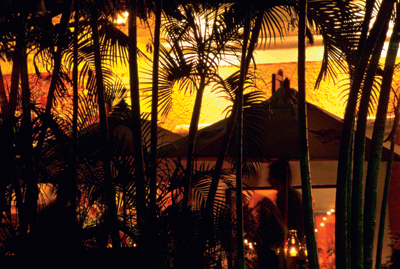
Cabo. The name conjures up images of buff So-Cal youths hanging upside down for tequila shots at Sammy Hagar’s Cabo Wabo. If that sounds awesome(!), then you and my 1995 incarnation would get along like a casita on fire. But now that I’m a little closer to 40 than 30 (and by a little I mean a lot), the all-night party scene at my vacation destination is less of a pull than it once was.
But, lately, Los Cabos—the twin towns of Cabo San Lucas and San Jose del Cabo, on the tip of the Baja peninsula—has also come to signify a stratum of vacation that calls to me: infinity pools, private beaches, towel valets and haute cuisine. Chilled pineapple skewers delivered poolside instead of late-night pizza slices eaten curbside. These days, Cabo is more Jennifer Aniston (who famously held her 41st birthday here), less Megan Fox.
As my cab rolls up to my low-slung resort I know I’m on the right track. The beachside Sheraton Hacienda del Mar Golf and Spa Resort is designed in the classic style of a Mexican hacienda, with ochre-toned buildings winding through 28 acres of sprawling gardens. There are fountains and songbirds. The place whispers, “Relax, this is a Hagar-free zone.”
I arrive too late to hit the beach, but a Five Star Diamond Award-winning beachside restaurant, De Cortez Grill and Restaurant, fits the bill for an easy transition into vacation mode. At first the stiff ocean breeze wants to force me inside, but our server knowingly assures me to wait for sunset—when, true to form, the wind slackens, then disappears altogether. I opt for a local organic shrimp salad, and move on to tuna that’s been scented with clove and garlic and topped with rich pancetta and spring onions—along with a sweet chimichurri sauce that nods to our locale. I’m surprised by and enamoured with the Mexican pinot noir the waiter recommends. I end the night with an icy glass of local liqueur Damiana, made from the flower of a shrub of the same name—a little like ending the meal with a sweet herbal tea.
The Rubenesque woman on the Damiana bottle—local legend says the elixir boosts fertility—looks a little like my own reflection these days, but the next morning I don my two-piece anyway and head down to lounge by the—I’m relieved to discover—decidedly grown-up pool. A concierge offers to polish the sunscreen off my sunglasses. The 12-foot waves on the beach in front of me are too rough for swimming, but they sure make for pleasant audio accompaniment to a day where my toughest decision is which fruit-laden drink to order for happy hour. My workout consists of periodically lifting the 1,000 or so pages of the Girl with the Dragon Tattoo.
I’m pretty sure a few days pass this way (time becomes an elastic concept under such conditions), but one afternoon I seek a reprieve from the relentless pampering and head into the nearby small town of San Jose del Cabo. Where Cabo San Lucas is urban big city, San Jose del Cabo is a sweet Mexican village of vintage adobe buildings, winding streets and an interesting art district—all charming and age-appropriate. But just off the main square I catch sight of a sign that says “Shooters” and I allow myself to investigate. I head up to the rooftop bar—just getting going at this early hour—and chat with the owner. It turns out that Terry Erickson is a Calgarian by way of Whitewood, Saskatchewan, who drove down to Cabo to stay for a week—nine years ago. His charming open-air canteen prides itself on offering “the only 10-peso beer in Los Cabos,” which might be a bad thing, if it weren’t an icy Corona, paired with decent guacamole in friendly grass-hut-style environs. It’s also ground zero for playoffs games, and though Erickson is a Flames fan, he keeps that under wraps from his mostly Vancouverite customer base on Canucks night. “I know which way my bread is buttered,” he laughs.
Back at the hotel, a nighttime beach stroll brings me past a happy wedding circle gathered around a campfire. There’s a lot of light revelry, good spirits and a cache of marshmallows, chocolate and graham crackers for a late-night ’smores party. This is my kind of beach party. In the distance, fireworks light up the night, their crash challenged only by the roaring surf.
On my final night I decide to introduce my old self to my new self—there will be tequila, but it will be a decidedly adult and expensive tasting of handcrafted expressions of the spirit (see “4 Shame-free Tequilas,” page 84, for the results). In lieu of the traditional salt and limes, each tasting—from the young and herbal blanco to the smoky aged añejo—is followed by the house’s special recipe of sangrita (literally, “little blood,” not to be confused with the Spanish sangria). Its blend of fresh pineapple, grapefruit and orange juice—with some cilantro and jalapenos thrown in—both warms us with its spiciness and cleanses our palates as we move on to the stronger stuff. The shudder that tequila used to bring on is replaced by a smile at the rich añejo—vanilla-scented, with more in common with a single-malt Scotch than the shooter version that is the siren call for every college freshman.
Feeling both mature and pleasantly warm I head into the heart of Cabo San Lucas. I’m wisely avoiding the whistles of the shooter girls and their happy customers in the famed dive bar El Squid Roe when I’m drawn to what sounds like live Mexican music down a side street. It’s a second-floor karaoke bar projecting the vocal theatrics above down to bypassers below. I stroll up the stairs, take in the festive atmosphere and, courtesy of that last añejo, slap my name on the singer list—a bold decision that seems less and less wise as my turn approaches. Finally my name is called and I timidly approach the stage. As the supportive, largely Mexican, crowd starts cheering me on, it isn’t long before the host and I are belting out “Don’t Let the Sun Go Down On Me.” Deep in song I’ve already forgotten that I’m also serenading the legions of partygoers stumbling out of El Squid Roe below. It seems you can take the girl out the party, but Los Cabos brings the party back to the girl.
© 2008 Western Living. All rights reserved
Flickr’s 5 Billionth Photo
Monday, September 20th, 2010Government concessions needed to sell the HST
Thursday, August 26th, 2010I have asked the companies involved about prices possibly being reduced — as the government has outlined — I have got quizzical looks and laughter rather than commitments.
Barbara Yaffe
Sun
The British Columbia and federal governments need to get creative in resolving the pickle they’ve got themselves into over the harmonized sales tax.
It is now clear, following last week’s dismissal by B.C.’s Supreme Court of a lawsuit trying to quash the citizens’ anti-HST petition, that the two governments must take action.
It is not the B.C. legislative committee, now charged with considering what to do with the hot-potato petition, that has the real power to address this issue. The committee will merely preside over a sideshow that ultimately will go nowhere, given that all roads lead to negative or non-binding outcomes. For example, if the committee decides to return the matter to the legislature for a vote, the B.C. Liberals surely would refuse to nix the tax. Alternatively, if a September 2011 referendum is held and voters reject the tax, the government again is not legally obliged to act on that outcome.
So, the matter really needs to be addressed by the provincial and federal governments, which, by law and through a tax agreement, mandate and regulate the harmonized abomination and have power over what must be done to make it minimally palatable to the population.
Because British Columbians have spoken. At present the tax is not acceptable. It must be made so. It is not simply, as the government wishes it were, a case of telling British Columbians that the tax is good for B.C.’s economy.
Citizens have heard this message ad nauseam from MLAs, MPs and economists. This argument may be sound but clearly it is not sufficient.
It is time for the B.C. Liberal government, backed by the federal Conservatives, to offer tangible concessions to taxpayers in a bid to win the support they never got to implement the new tax.
The Gordon Campbell crowd immediately should announce, as the Dalton McGuinty government in Ontario did to positive effect, that coffee and newspapers will become HSTexempt.
Again, following the Ontario government’s lead, Finance Minister Colin Hansen should start mailing cheques to middle-and lower-income British Columbians to help them adjust to the tax — just as the B.C. government received $1.6 billion in transition funds from the federal government to help it adjust.
It may be that the two governments will have to renegotiate their tax agreement in order to boost Ottawa’s financial help for the transition. This is a price that must be paid for the governments’ remarkably inept handling of the file.
Furthermore, the Campbell government should commit to issuing quarterly public reports, starting a year after the HST implementation, that will back up its pledges that consumer prices will come down as a result of an estimated $2-billion reduction in costs for B.C. businesses.
People quite simply do not believe that this will happen, even though common sense holds it should as the business sector stops paying provincial sales tax on its inputs.
To date, I’ve noticed higher prices on everything from my takeout coffee to my cable bill. Whenever I have asked the firms involved about prices possibly being reduced — as the government has said — I have got quizzical looks and laughter rather than commitments.
If people are to have any confidence that consumer prices eventually will come down, they will need proof.
A government agency should be assigned to probe, on a regular basis, prices being charged to consumers to ensure that what the government has said will happen will. Promises are cheap.
Only after such concrete measures are taken to address the electorate’s concerns about the HST will citizens be prepared to accept the tax, however grudgingly, and move on.
© Copyright (c) The Vancouver Sun
Legal case could expose Harper government to HST backlash
Tuesday, August 24th, 2010As parties contemplate an election, federal responsibility for the controversial tax could hurt the Conservatives in British Columbia
Barbara Yaffe
Sun

B.C.’s populist fight against the harmonized sales tax took an unexpected twist last week, one that could pose a challenge for the Harper Conservatives. Photograph by: Chris Wattie, Reuters
B.C.’s populist fight against the harmonized sales tax took an unexpected twist last week, one that could pose a challenge for the Harper Conservatives.
As the Gordon Campbell government has gone about implementing the widely reviled new sales tax, its cabinet ministers and MLAs have done the heavy lifting in terms of selling it, however ineptly, to the public.
And so, blame overwhelmingly has been directed at the provincial Liberals, with the Conservative government in Ottawa bobbing and weaving to keep well out of the way.
The feds in fact have been successful in that endeavour, with Prime Minister Stephen Harper making virtually no public comment on the tax or the vigorous fight against it in B. C, and Finance Minister Jim Flaherty also keeping a safe distance.
But last week’s legal case in defence of the HST, launched by six business groups, brought public attention to the fact that the HST is wholly and completely a federal tax, mandated by federal legislation passed by Parliament.
Most British Columbians are aware that the HST amalgamates the provincial sales tax and federal goods and services tax, but until the court case few voters would have considered the particularities of its legislative genesis and jurisdiction.
The court case advertised the notion that the B.C. government’s role regarding the HST was limited to forging a tax pact with Ottawa, known as a Comprehensive Integrated Tax Coordination Agreement.
This agreement, approved through a B.C. cabinet order, established a process for the tax’s implementation and collection, and contained provisions for Ottawa to cover associated costs.
With this information now squarely in the public realm, it’s more likely the Harper government will be brought into the HST controversy.
Not a good thing as federal political parties contemplate an election that could come any time once Parliament is back in session on September 20.
None of this is lost on lead anti-HST crusader Bill Vander Zalm who until last week was exclusively directing his venom at the province — threatening recall campaigns against Liberal MLAs.
But after the court case, Vander Zalm added another name to his enemies list: “We need to make the prime minister aware and ask him if there’s anything he can or will do.”
The former Socred premier is warning: “If the courts decide … it’s federal as opposed to provincial, then obviously the people will take it out on the feds, there’s no question about that.
“We’ll use [the issue] for all it’s worth.”
(The court in fact acknowledged in its judgment last Friday the tax is federal and that B.C.’s involvement was through the tax agreement.)
The situation is ripe for the anti-HST forces to exploit because, as Vander Zalm notes, federally, “the opposition here is mostly NDP fighting Conservatives in the next election.”
New Democrats won nine British Columbia seats in the 2008 federal election, in second spot after the Conservatives, who took 22 seats. Liberals won just five seats, and there’s little scope for Grits to benefit from this controversy because they’ve stood with Conservatives on the HST.
But New Democrats, both provincially and federally, find themselves on the protesters’ side, leaving Jack Layton’s party to potentially benefit.
For months, the NDP leader has been insisting that Harper should wear the HST.
“He has been quite skilled in coating himself in Teflon.”
B.C. will be an important province for the federal parties in the next election, and especially for Conservatives. After Ontario and Alberta, the party elects most MPs from the western-most province.
Ontario, where the HST was also introduced on July 1 without much fuss or bother, must be looking like a far less complicated place to the Harper team right about now.
© Copyright (c) The Vancouver Sun


